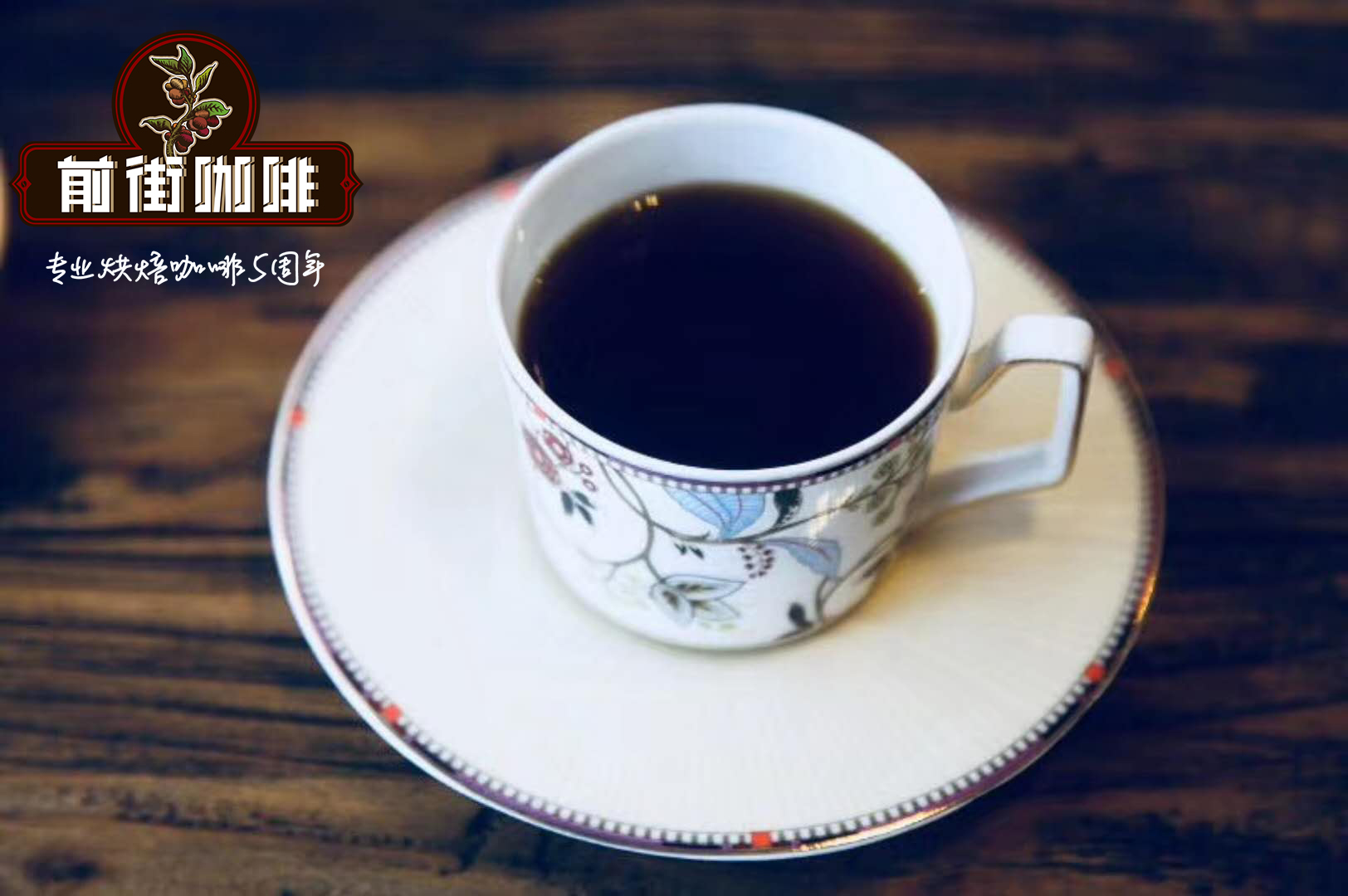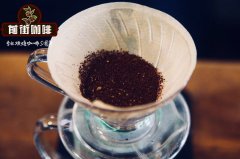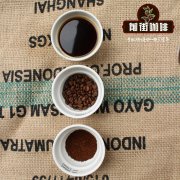How do you produce the strange smell of coffee? How can I make coffee powder without tools?
How do you produce the strange smell of coffee? How can I make coffee powder without tools?

In the process of brewing coffee, we all look forward to the moving moment full of fragrance:
Caramel, flowers, berries, nuts, honey, tea. Wait for all kinds of wonderful and compound aromas
It's definitely the most charming thing about coffee.
More than 300 aroma compounds can be detected in raw coffee beans, and more than 850 in ripe coffee beans, with an astonishing complexity (this data is quoted from boutique coffee science)
But in the process of baking or cooking, there will still be a bad strange smell, which is of course abhorrent.
It is necessary to select high-quality raw beans, filter defective beans and adjust appropriate cooking variables in order to keep the aroma beautiful and flash off the strange smell.
And understanding is the first step in preventing and finding a solution.
Therefore, the seniors shared a translation article explaining the causes of the strange smell of coffee for your reference.
Although it is not a very new article, I still have solid practical experience in the generation of strange smells (and it is written by celebrities).
You can still take a serious look, and compare the hands of Doudou, to find out the problem!
Another article is quoted from the blog of Kuka Coffee, but Kuka should not be the original translator, and the seniors cannot find it. In order to be loyal to the original translator, all of the following contents remain unchanged. If some translations are not in line with everyone's experience, please look at English for comparison.
The picture is made by the seniors themselves, so that everyone can imagine while looking at it.
The five stages of coffee aroma change
This article is mainly translated from the third edition of "The Coffee Cuppers' Handbook" published by SCAA, Chapter 2
The corruption and defects of the fragrance. Author: Ted R. Lingle
The aroma of coffee is the main purpose for us to buy and drink coffee.
Perhaps some people drink coffee to enjoy the strong flavor of coffee, do not care how much fragrance, let alone how the bar serves the cup of coffee he chooses.
The concentration of coffee feels to be the demand of these guests. Even so, we can't deny the emotion that most people feel when they enjoy the aroma of coffee.
Fragrance, only fragrance, is the highest value of coffee. Coffee lacks aroma, like a person without temperament. Temperament can have different forms and portions, and fragrance also has its different components and presentation.
Coffee that loses its flavor always makes people feel defective. Spend money on coffee, mainly because of its fragrance.
Through this article, we will look at the possible reasons why the coffee is stale or tasteless.
In the past, we have repeatedly mentioned that the quality of a cup of coffee comes from four important stages, namely:
1. Coffee plantation management: including varieties, planting environment and climatic conditions, fertilization, irrigation, pest control, etc.
two。 Post-harvest treatment methods: including harvest methods, post-harvest preservation, post-processing methods, cleanliness and hygiene of treatment sites, drying methods, storage methods and environment, and shelling process. And then there is the transportation process.
3. Baking method: including the understanding, operation and preservation of roasted coffee beans.
4. Make coffee.
That is to say, the quality of coffee is being shaped at all stages mentioned above, and the quality of coffee may be defective as a result of improper operation.
The following are the main points mentioned in the Coffee Cup Tester Handbook, which is about the timing of corruption and defects in the aroma of coffee beans, which is worthy of our coffee workers' reference:
The first stage takes place during harvest and drying.
When farmers dry coffee fruits or coffee beans, they will reflect the aroma of coffee beans and, in serious cases, cause rotten smell.
When harvesting coffee fruit, if the fruit is left in the coffee garden for too long, the bad smell in the garden will continue to be produced, and the enzymes inside the fruit will begin to break down the substances in the seeds.
Because of chemical changes, arabica coffee beans produce "Rioy" and robusta "rubbery".
Rubber flavor rubbery
In the drying stage, if the coffee fruit is placed in a high-temperature and humid environment, the action of internal enzymes is accelerated to produce a "fermented flavor" (fermented).
(explanation: this is why it is repeatedly stressed that after the coffee fruit is harvested, the peeling work should be completed on the same day, or within 24 hours, and should not be stacked for too long.)
Fermented flavor fermented
In general, coffee beans are laid on the cement floor, or on a high drying bed, or on plastic cloth.
The main purpose is to keep the sun-drying place clean and clean to avoid pollution. If the coffee beans are placed in an unclean place, especially when the soil is dry, the oil inside the beans absorbs the smell of the soil and produces a "earthy".
Earthy earthy
If you put coffee beans in wet places, it is easy to cause mildew and produce a "moldy smell" (musty). If it is dried mechanically and the drying speed is too fast, the oil inside the beans will decompose, resulting in a "skin smell" (hidy).
Smelly hidy
(explanation: mildew seems to happen slowly. In fact, because the environment is humid or drenched with Rain Water, coffee beans get moldy very fast, about 1-2 days, you can see the appearance of moldy phenomenon. In fact, when you see the appearance of mildew, it has been moldy for some time.)
The second stage occurs in the storage stage, which is the aging stage of coffee beans.
This stage is from harvest and drying to the period of baking.
In the first few months after harvest and processing, coffee beans have a unique grass smell, like the smell of freshly harvested alfalfa, known as "grassy". Grass flavor grassy
The enzyme inside the raw bean continued to function, and after a few months, this aroma characteristic gradually decreased. Until it is shipped and sold, it is called "new crop", that is, "seasonal beans".
(explanation: fresh beans that have just been harvested have their own characteristics as well as their unavoidable smell of green. This is also the reason why foreign beans are not in a hurry to ship after harvesting and finishing. Is to reduce the smell of green.)
When coffee beans are properly stored, the speed of enzyme action will be reduced.
About a year later, these chemical changes began to reflect the various acids inside the coffee beans. The taste senses this change, and this coffee bean is already a "past crop". If the enzyme action greatly reduces the content of various acids after several years of storage of raw beans, the coffee beans are called "old beans or aged beans" (aged).
In addition to the enzyme action, coffee beans slowly lose organic matter and gradually produce a hay-like "strawy".
Straw flavor strawy
After a few years, coffee beans continue to lose organic matter, eventually producing an unacceptable "woody".
Wood flavor woody
The third stage occurs during baking, which is mainly coking.
When the baking temperature reaches 400 ℉ (204 ℃), the sugar inside the coffee bean continuously changes chemically: it combines with the organic and inorganic substances inside the coffee bean to form brown caramel.
The sugar inside the raw bean, as the heat increases, will shadow to the aroma inclusion.
If the heat is not enough, so that the coking process is not sufficient, the roasted coffee beans will have the smell of grass. The aroma is like the green bean (green peas) in green vegetables, called "stinky green flavor" (green).
Smelly green flavor green green bean green peas
If the heating process is too slow, the roasted coffee beans taste insipid and smell tasteless, which is called "roasted flavor" (baked).
If the baking rate is too fast-the edges of the coffee beans are obviously charred-the chemical changes are not complete, forming a "tipped". If the heat is too high, the surface of the coffee beans will be scorched, resulting in a "scorched smell" (scorched).
In the fourth stage, after baking, the coffee beans will exhaust.
After roasting, the coffee beans begin to exhaust. At this time, the coffee beans are the freshest and full of aroma substances, most of which are volatile mercaptan or sulfur compounds.
When the coffee beans are ground into powder, the aroma will be greatly lost. As exhaust continues, more volatile organic matter, a water-soluble aromatic mixture in the fiber, will be lost with the release of carbon dioxide. The loss of this aroma results in the "flat" of coffee beans.
Coffee beans continue to exhaust and volatile organic matter continues to be emitted, resulting in "tasteless beans" (vapid).
If water and oxygen enter the coffee beans, the quality will be even worse.
First of all, the oil inside the coffee beans will be oxidized. Shadow to the coffee taste, resulting in a "light taste" (insipid).
Then, continued exposure to oxygen and moisture accelerates the oxidation of linoleic acid and triglycerides, producing an unpleasant taste, a condition known as "stale (rancidity)" (stale).
In the end, the oil inside the coffee beans reacts with oxygen and water to produce an unpleasant quality, called "rancid".
Oily smelly rancid
The fifth stage is after brewing.
In the post-brewing (still) stage, the aroma of coffee changes faster than at other stages.
After brewing, coffee begins with the most "fresh" (fresh), that is, the most abundant content of volatile organic compounds that make up the aroma of coffee.
If the effervescent liquid in an unsealed container is continuously heated, the action of active molecules and the high temperature make the loss of gaseous matter faster.
The brewed coffee first loses its aroma and becomes "flat".
Continue to heat up to evaporate the volatile matter, making the coffee "vapid".
Prolonging the heating time will affect the preservation of organic matter in the coffee solution.
Long-bond organic matter breaks into short-bond substances, which will increase the acidic taste, which is called "sour astringent taste" (acerbic). It is proved that the coffee contains chloric acid.
Secondly, due to the evaporation of water, the salt concentration in the solution is relatively increased, resulting in a "saltwater flavor" (briny).
Saltwater flavor briny
If you continue to heat the protein and turn the coffee liquid into a gel, there will be a "tar flavor" (tarry).
Tar flavor tarry
Finally, the concentration of alkali-containing substances in the coffee liquid increased, its bitter taste plus salt, showing a "salt" (brackish).
Important Notice :
前街咖啡 FrontStreet Coffee has moved to new addredd:
FrontStreet Coffee Address: 315,Donghua East Road,GuangZhou
Tel:020 38364473
- Prev

What exactly is the definition of boutique coffee SCAA? How do you drink the coffee powder?
What exactly is the definition of boutique coffee SCAA? How do you drink the coffee powder? I think the handsome word "Specialty coffee" is about to become a household name in Taiwan. There are many cafes with the name of boutique coffee in Taiwan (of course, vvcafe also hangs), but in fact, the meaning of the word "boutique" is not so clear, so most people still can't help it.
- Next

Panamanian Coffee Manor BOP Champion Alida Manor introduces Panamanian Coffee handmade Flavor description
Professional coffee knowledge exchange more coffee bean information please follow the coffee workshop (Wechat official account cafe_style) product name: 2016 Panama BOP champion Alida Manor Kaduai sunburn 1800 meters above sea level LOT49 batch (Panama Boquete Elida Estate Natural lot49) flavor description: soft flower flavor, orange fruit tone, full flavor, taste
Related
- Detailed explanation of Jadeite planting Land in Panamanian Jadeite Manor introduction to the grading system of Jadeite competitive bidding, Red bid, Green bid and Rose Summer
- Story of Coffee planting in Brenka region of Costa Rica Stonehenge Manor anaerobic heavy honey treatment of flavor mouth
- What's on the barrel of Blue Mountain Coffee beans?
- Can American coffee also pull flowers? How to use hot American style to pull out a good-looking pattern?
- Can you make a cold extract with coffee beans? What is the right proportion for cold-extracted coffee formula?
- Indonesian PWN Gold Mandrine Coffee Origin Features Flavor How to Chong? Mandolin coffee is American.
- A brief introduction to the flavor characteristics of Brazilian yellow bourbon coffee beans
- What is the effect of different water quality on the flavor of cold-extracted coffee? What kind of water is best for brewing coffee?
- Why do you think of Rose Summer whenever you mention Panamanian coffee?
- Introduction to the characteristics of authentic blue mountain coffee bean producing areas? What is the CIB Coffee Authority in Jamaica?

